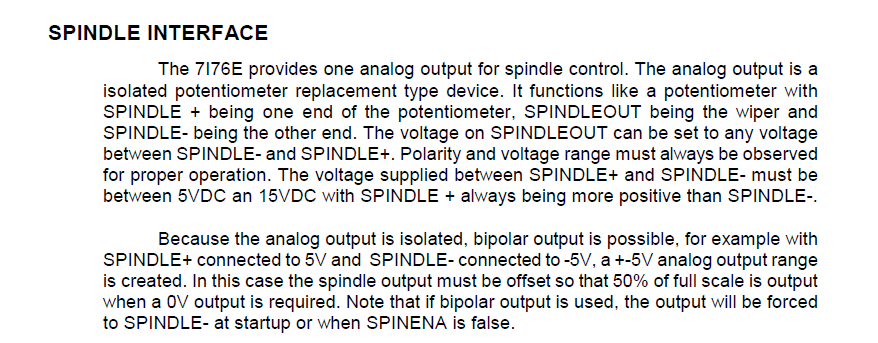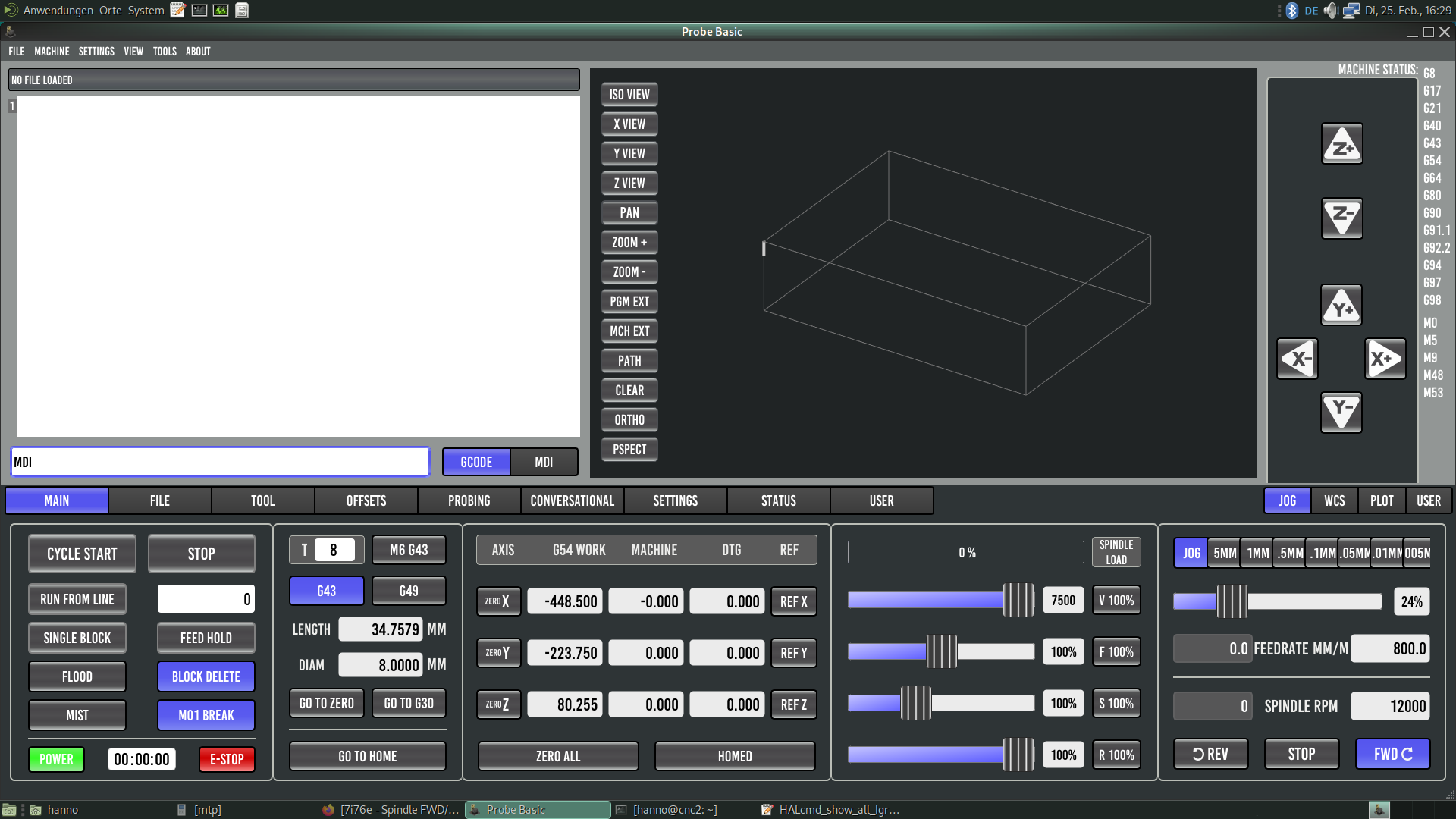Search Results (Searched for: 7i76e)
- Muftijaja
- Muftijaja
28 Feb 2025 12:39
Replied by Muftijaja on topic 7i76e - Spindle FWD/ENA ok, but no speed output
7i76e - Spindle FWD/ENA ok, but no speed output
Category: Basic Configuration
- Aciera

27 Feb 2025 18:50
Replied by Aciera on topic Kinematik Datei - Berechnung für B-Achse hinzufügen
Kinematik Datei - Berechnung für B-Achse hinzufügen
Category: Deutsch
- Muftijaja
- Muftijaja
26 Feb 2025 18:44
Replied by Muftijaja on topic 7i76e - Spindle FWD/ENA ok, but no speed output
7i76e - Spindle FWD/ENA ok, but no speed output
Category: Basic Configuration
- PCW

26 Feb 2025 15:51
Replied by PCW on topic 7i76e - Spindle FWD/ENA ok, but no speed output
7i76e - Spindle FWD/ENA ok, but no speed output
Category: Basic Configuration
- PCW

26 Feb 2025 15:33
- Muftijaja
- Muftijaja
26 Feb 2025 13:02
Replied by Muftijaja on topic 7i76e - Spindle FWD/ENA ok, but no speed output
7i76e - Spindle FWD/ENA ok, but no speed output
Category: Basic Configuration
- HenkvE
- HenkvE
26 Feb 2025 07:40 - 27 Feb 2025 09:01
- Muftijaja
- Muftijaja
26 Feb 2025 00:20
Replied by Muftijaja on topic 7i76e - Spindle FWD/ENA ok, but no speed output
7i76e - Spindle FWD/ENA ok, but no speed output
Category: Basic Configuration
- PCW

25 Feb 2025 23:19 - 25 Feb 2025 23:22
Replied by PCW on topic 7i76e - Spindle FWD/ENA ok, but no speed output
7i76e - Spindle FWD/ENA ok, but no speed output
Category: Basic Configuration
- Muftijaja
- Muftijaja
25 Feb 2025 20:51
Replied by Muftijaja on topic 7i76e - Spindle FWD/ENA ok, but no speed output
7i76e - Spindle FWD/ENA ok, but no speed output
Category: Basic Configuration
- PCW

25 Feb 2025 16:23
Replied by PCW on topic 7i76e - Spindle FWD/ENA ok, but no speed output
7i76e - Spindle FWD/ENA ok, but no speed output
Category: Basic Configuration
- Muftijaja
- Muftijaja
25 Feb 2025 15:33
Replied by Muftijaja on topic 7i76e - Spindle FWD/ENA ok, but no speed output
7i76e - Spindle FWD/ENA ok, but no speed output
Category: Basic Configuration
- PCW

25 Feb 2025 00:56
Replied by PCW on topic 7i76e - Spindle FWD/ENA ok, but no speed output
7i76e - Spindle FWD/ENA ok, but no speed output
Category: Basic Configuration
- Muftijaja
- Muftijaja
25 Feb 2025 00:20
7i76e - Spindle FWD/ENA ok, but no speed output was created by Muftijaja
7i76e - Spindle FWD/ENA ok, but no speed output
Category: Basic Configuration
- PCW

24 Feb 2025 20:08
Time to create page: 1.089 seconds


